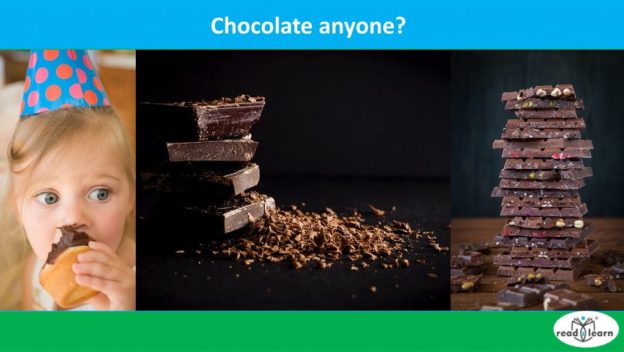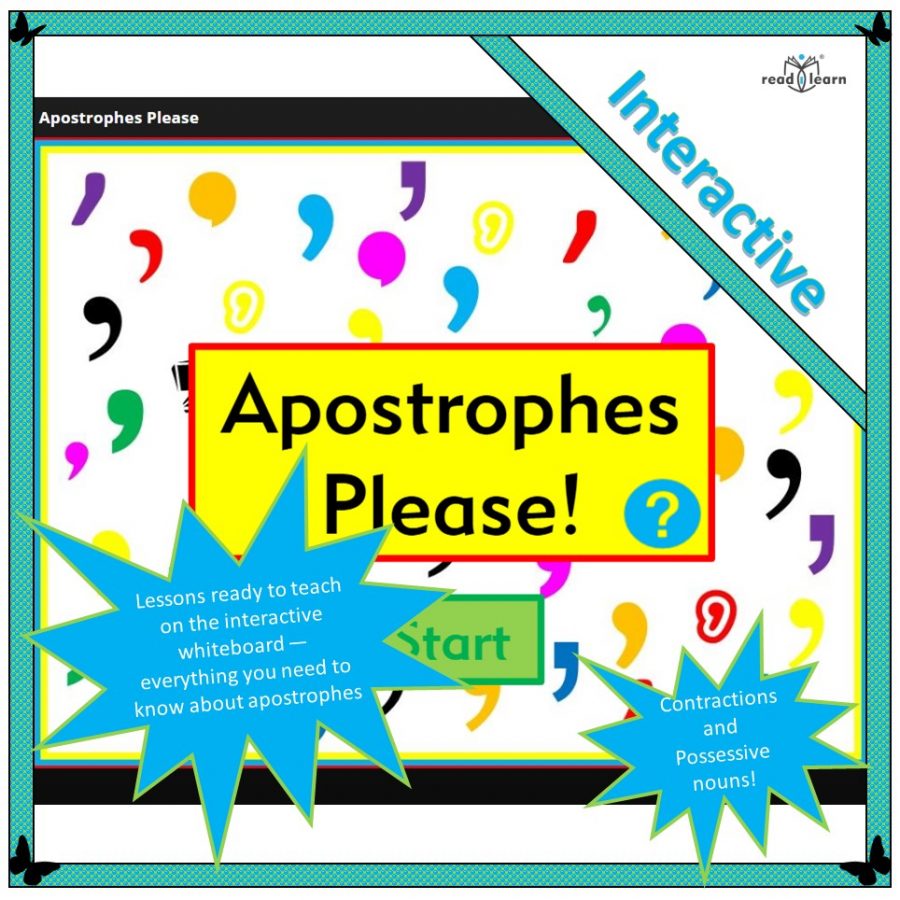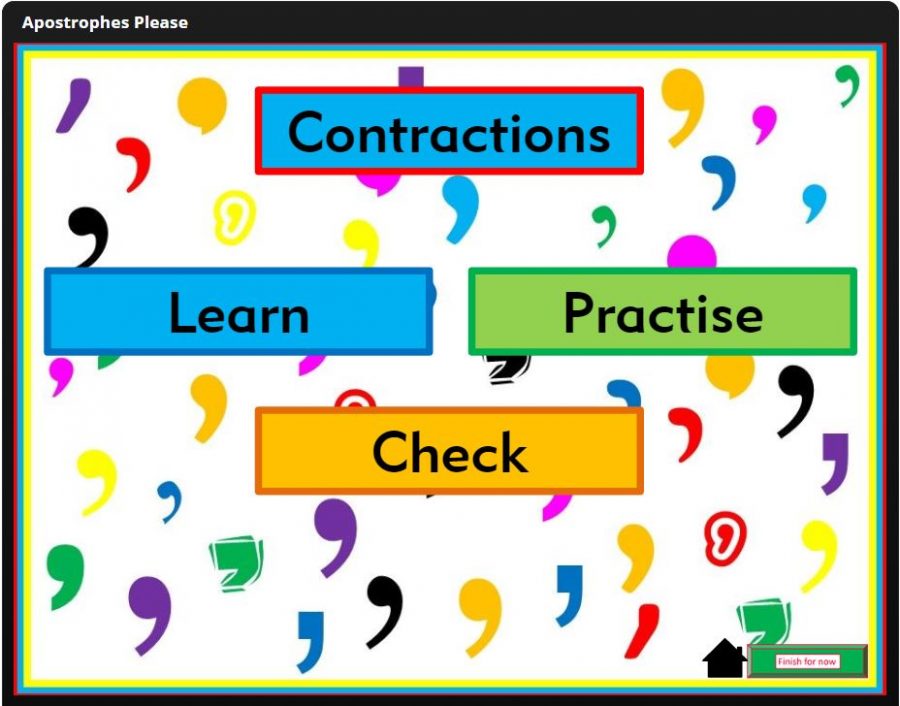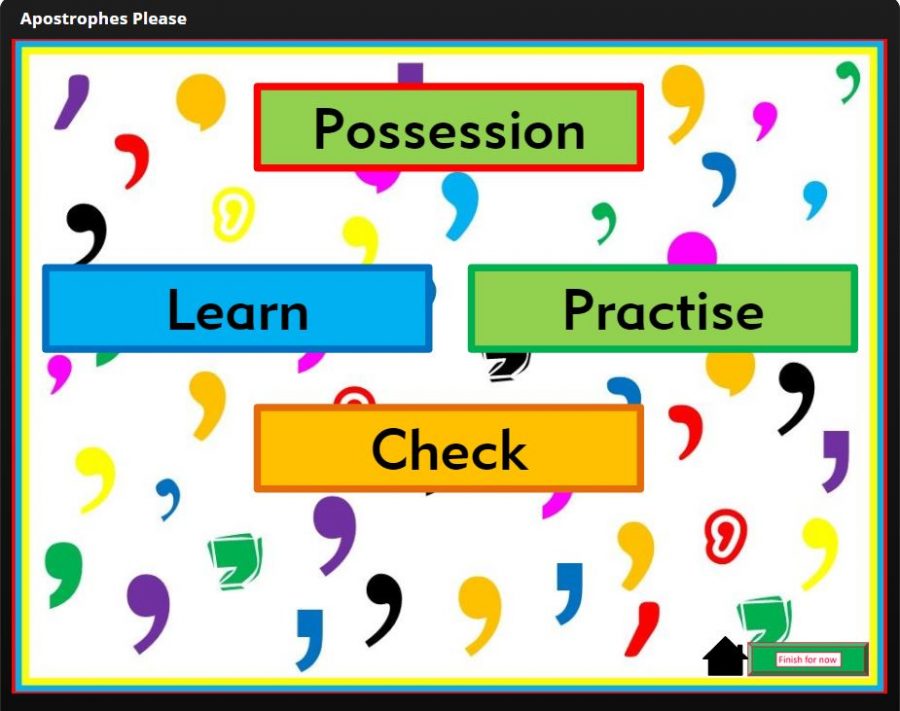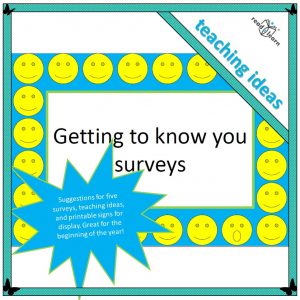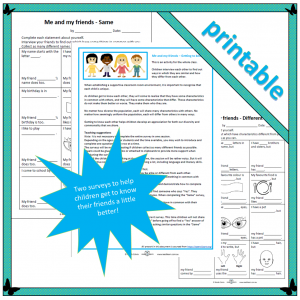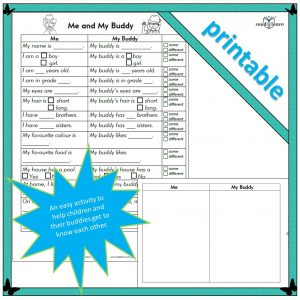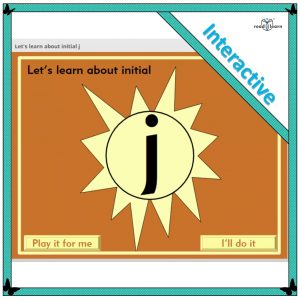Money is one of those things we all need to understand to be able to participate fully in life as we know it. I think it becomes more difficult for children to understand the value of money as we move towards a cashless society, but maybe that’s because I grew up pre-cards of any kind. Now many children only see transactions made with cards or even phones and watches. Many will have no need to enter a physical bank to deposit or withdraw funds or for any other reason. It is all done online. Perhaps learning about coins and notes will one day be relegated to history lessons, but for now I think it is still important for children to learn about them and their value and they still feature in the Curriculum. For this reason, I have made some resources to support your teaching of young children about our Australian coins and their value. (Lessons about notes will be added later.)
Australian coins helps children learn to recognise, identify and describe the coins according to colour, shape and size, and the identifying icon on the tails side. Additional information is provided about the Australian animals and icons featured on the tails side of each coin. This lesson is ready to teach on the interactive whiteboard.
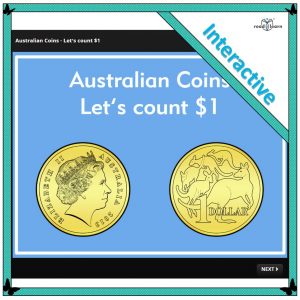
Australian Coins – Let’s count $1 gives children practice in counting collections of coins to $1.
There are three separate sections which can be used over a series of lessons.
- Count groups of coins of the same value that equal $1.
- Count collections of different coins that equal $1.
- Make collections of coins to equal $1.
These lessons are interactive and ready to teach on the interactive whiteboard.
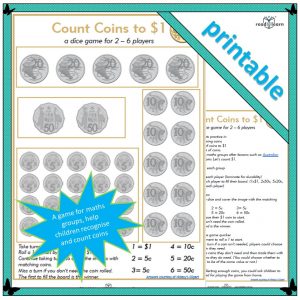
Count Coins to $1 is a dice game that gives students practice in
- recognising and naming coins
- counting the value of coins to $1
- comparing the value of coins.
It is a perfect game for maths groups to follow-up lessons with Australian Coins and Australian Coins Let’s count $1.
Continue reading: Lessons about recognising and counting Australian coins – readilearn




